Watersports and Ocean Related Imaging Services
Whether it's in water photography, sitting on shore with a long lens or creating split water fine-art for commercial or brand products, I've got you covered.
Okinawa is the Ocean. Many of us are drawn to the Ocean; we spend time in its liquid embrace. We dive beneath its surface to marvel at all of the majestic life forms that call it home. We ride the bands of energy that traverse its surface or glide across it, powered only by the wind. So many watersports and means of pleasure are derived from the Ocean. It is a place that creates memories, it does not force us to experience an unbridled sense of exhilaration, as that is derived naturally from the result, the byproduct, of our interactions with it. Given this, it stands as good reason to want to try and capture the essence of those special moments, which is why I have now developed an imaging service that caters to all manner of watersports imaging.
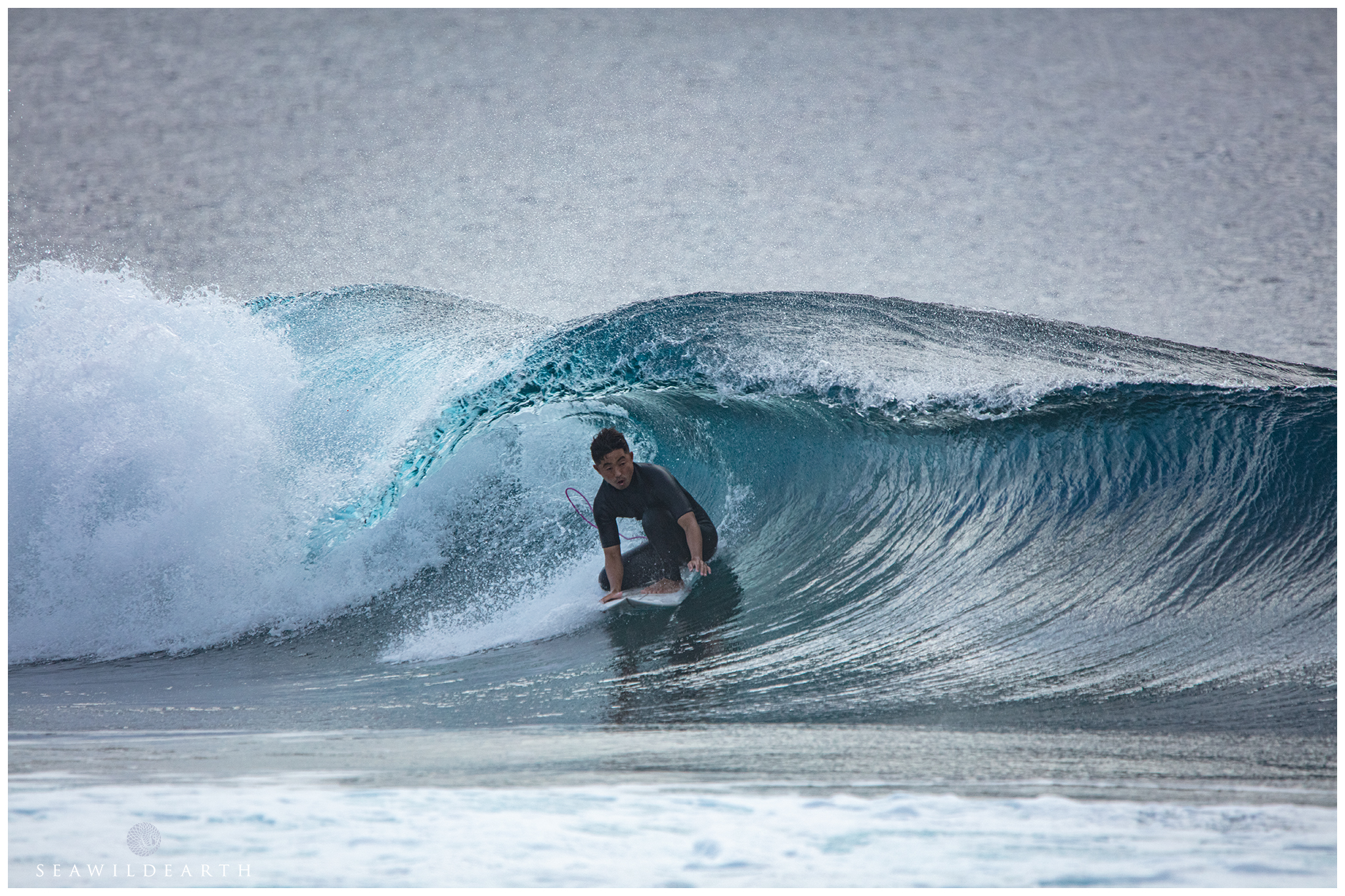
It's often quoted that "Only a surfer knows the feeling"...
Surfing has got to be one of the most emblematic of all sports within Okinawa, if not iconic on the global stage. That timeless drive to ride the 'perfect wave' sets people off on a quest that, in many situations, lasts a lifetime. There is something unique about experiencing that very private moment of just yourself being entombed within a barreling wave. It seems like a split second of absolute peace, and then all hell breaks loose. The maelstrom of power that mother nature unleashes on you depends on the size of the wave and your position within it. Either way, it is often suggested as the 'tax' for that brief moment of complete peace and tranquility.
Most surf locations in Okinawa are found on shallow reef breaks. This in and of itself can present genuine issues concerning the potential for injury should the surfer not catch the wave or indeed lose balance while riding. Again, this is the risk or reward assessment any surfer must make before entering the water in Okinawa. The payoff, however, can be truly exhilarating. Okinawa has some incredible waves depending on the swell. Even after typhoons, numerous surfers head out to ride the swells created by these tropical storms.
It seems that the central focus of surfing in Okinawa revolves around the breaks that are spaced out along what most people simply refer to as "the Seawall". This structure stretches from the area of Sunabe to the northern border of Chatan, covering almost three kilometers in length. All characteristic of wave can be ridden here, from a zone that's perfect for beginners and schooling all the way through to serious slab waves intended for genuinely experienced and competent surfers. From here, there are numerous other surf breaks, many known only to a handful of wave riders. As is common in surfing, when someone 'discovers' a wave, they tend to keep that a closely guarded secret given they prefer for that location not to become saturated with people and thus destroying their personal connection to that wave.
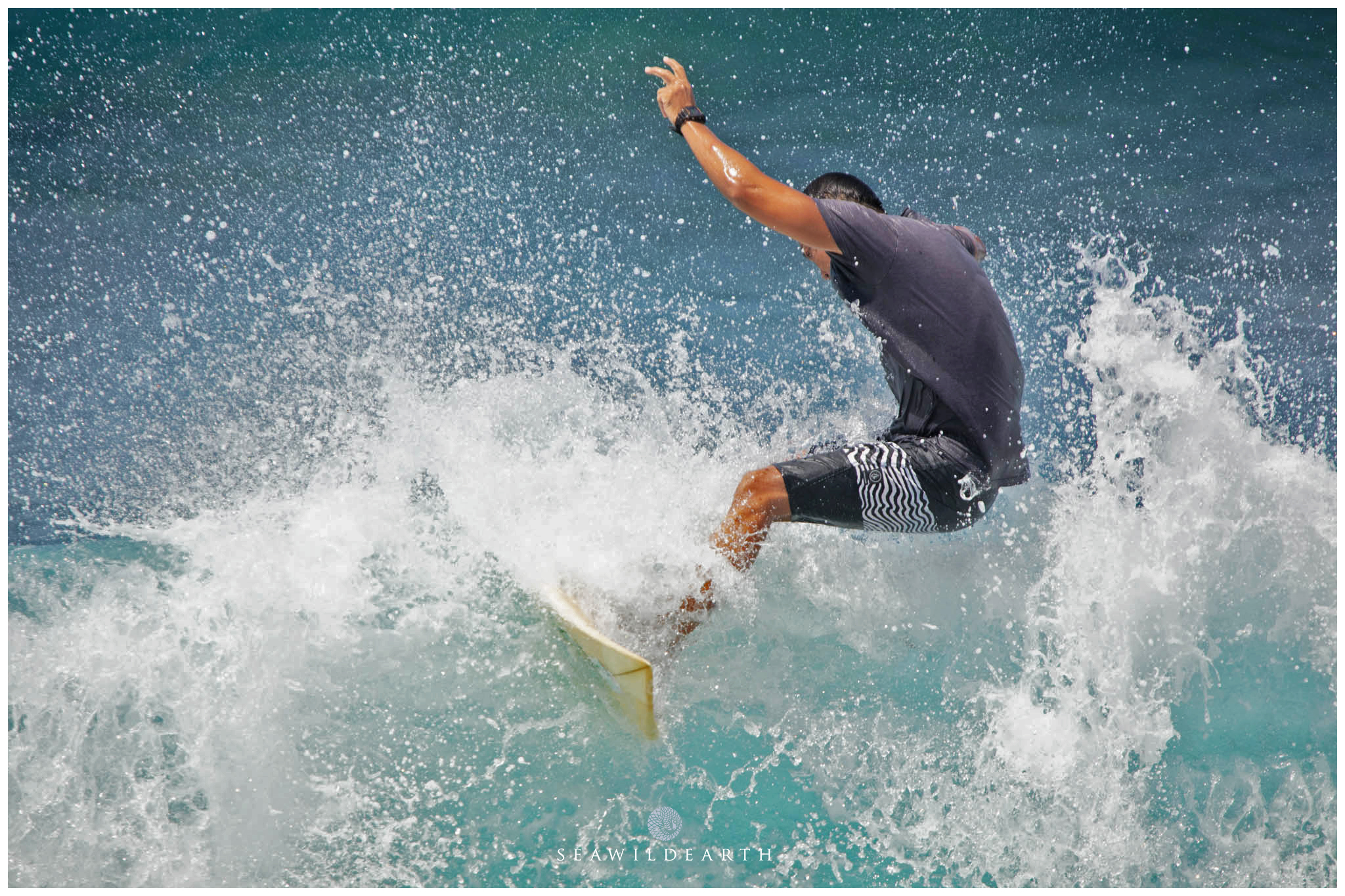
How about a photographic record of your surf session?
Whether sitting by the seawall with a long lens or actually being in the water with my dedicated and professional-grade surf housing that houses my 50.6MP Canon EOS 5DSr I can provide imaging services to those just starting out and who want images for either their social media or as prints for their home or office space.
Depending on the surf break you have in mind will depend on the imaging package I can offer. Everything starts with a discussion, so whatever your needs, reach out and contact me for a no-obligation chat to find out how best I can provide you with the imagery of your next surfing adventure. All watersports activities have the additional option for video filming, so again, bear that in mind when contacting me for further details.
There can be nothing that raises a sense of adventure than skipping across the surface of the Ocean propelled by the power of the wind. Surfing waves are formed by wind creating ripples on the ocean surface, ripples that grow. Windsurfing and Kitesurfing are two sports that also rely on that very same wind. There are a few locations in Okinawa where, with the right conditions, both Kitesurfing and windsurfing can be experienced.
As new sports are introduced, they find their way to these islands. Foiling and Kite Foiling are two such sports. Recently a Windsurfing buddy explained to me the difference between the experience of Kitefoiling to Windsurfing. Apparently, with windsurfing, the rider feels every reverberation and noise associated with it as the whole surface area of the windsurfing board on which they stand interacts with the ocean surface. Given that the sheer physiology of a Foil removes that greater contact surface area with the Ocean, it means one thing, first and foremost, the ride is both smoother and almost silent. While some people like the battering and vibrations they get from Windsurfing, some see the whole experience of Kite Foiling as being more rewarding, and less intrusive in the sense of peace and calm.
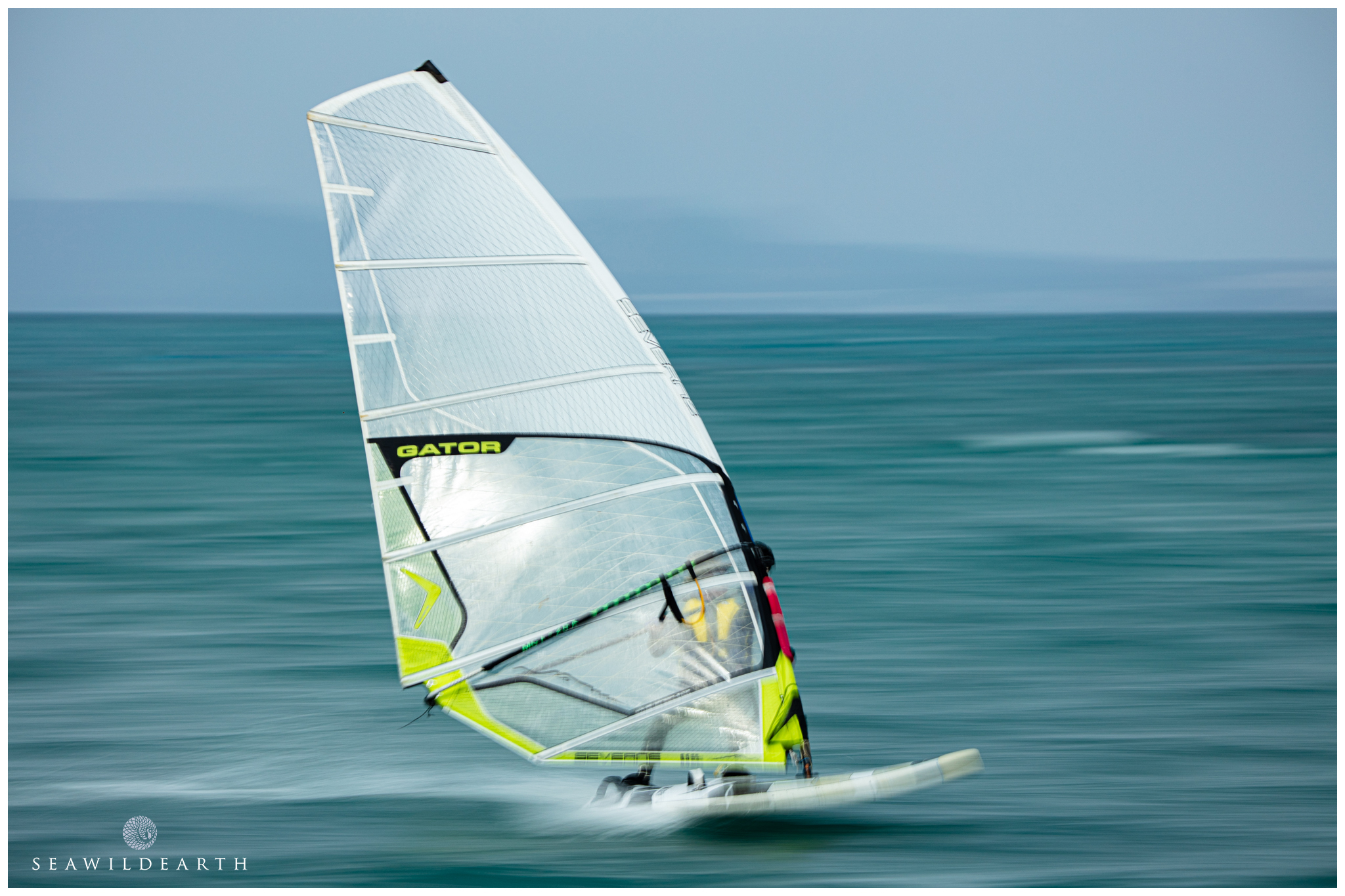
A slightly slower-than-normal shutter speed allows a greater sense of speed with the resulting blur of the ocean as I track the windsurfer in action.
As with surfing, I can be requested to sit either on shore with a long telephoto zoom lens to pick off shots as the rider, whether Windsurfing, Foil Kiting, or indeed Kitesurfing, zoom through their session. As with surfing, I can also be requested for in-water shoots for more accomplished riders. This is due to the potential for injury, especially with the foils, given their mast and wings extend below the surface.
Risks? Yes, there are risks, especially when I take to the water with my cameras. I mitigate this as much as possible using impact vests, watersports helmets and proven professional-grade surf housings. As the phrase is coined, without risk, there is no reward. Thus to capture incredible images of your adventures, I have to put myself 'out there' to be able to get them. There are situations I will not enter into, but these can only be found through discussions with potential clients.
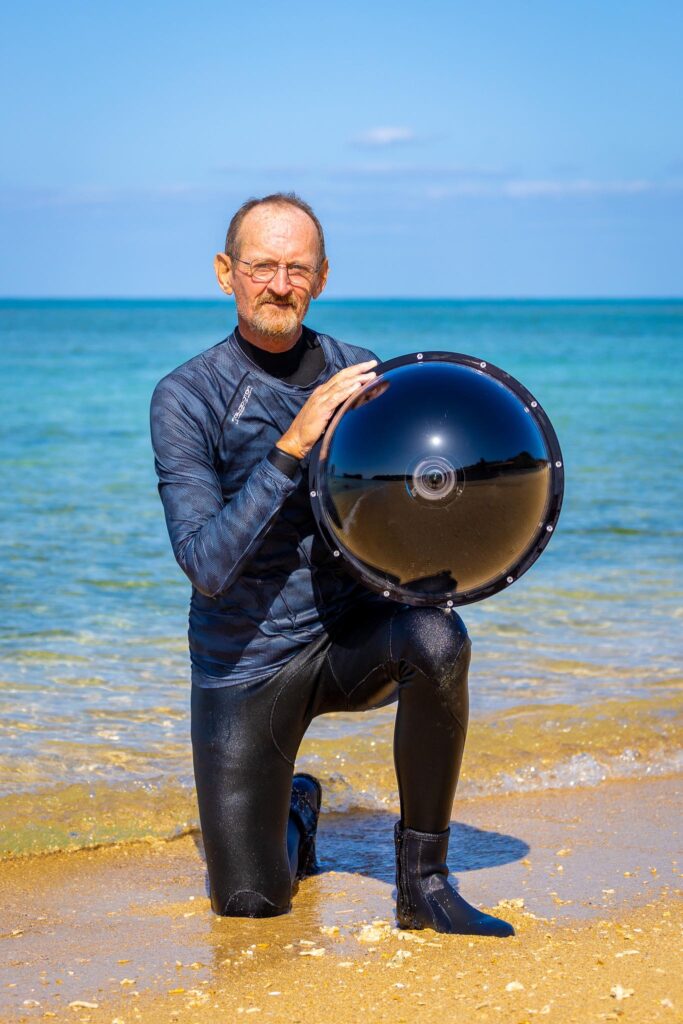
The Megadome for Split Shots
It's all about the camera. While some folks say "Why not just use a GoPro?" I respond with a point about quality. I employ the use of leading brand technology in my imaging acquisition blended with additional marine imaging hardware that is at the bleeding edge of its industry. The the split water shots for example. I use what is called a 'megadome' see pic left, which allows me to push the waterline further away from the lens in order to allow it to approach the minimum focal length of the lens used. In lay mans terms this means that the waterline can then be used as an artistic element within resulting shots.
Another argument on using a DSLR over a GoPro is the fact that a GoPro is a fixed aperture lens. It shoots at a wide aperture of f2.8 and employs a very high shutter speed to expose correctly. A wide aperture does not correct what is called refraction. Refraction is when for example you stand a pencil in a glass of water and it looks like the two halves, the submerged and the dry elements of the pencil, don't line up. One needs a smaller aperture to accomplish this, one can only thus dial in the required aperture on a camera that allows, like a DSLR. As a pointer I am normally using an aperture of between f16 and f22 depending on the requirements of the shoot.
Resolution is also the main issue when people are looking to print resulting imagery from such shoots. A GoPro with a dome port may look awesome but the resolution of the final image, which is invariably shot as a compressed jpeg, will let you down. Jpegs lose quality every time they are opened, edited and resaved. I shoot everything as RAW files so that I have a much greater leeway for lossless editing after the shoot.
To get a closer look at a split water shot taken using the 'megadome' simply navigate to the upper corner of this page, scroll to the top. When you get there you will see a small circular icon with opposing arrows. Click on that to see a recent image taken of my wife out swimming across the shallow reef found at the Sunabe region of Okinawa. That shot was taken using a Carl Zeiss Distagon T* 21mm f2.8 lens stopped to f16. You can clearly see the amount of detail rendered given this was also shot using the massive resolution that I get from the Canon EOS 5DSr, a massive 50.6MP of goodness. This all means that a shoot with the 'megadome' will allow you to print any image you wish as wall art in any format of your choice. To make that 'pop' though I would always suggest any prints to be accomplished using the medium of Aluminum. You can find all of the details for such prints on the page that outlines the benefits of Aluminum Printing.
Shore Based Watersports Photo Sessions Start at $125.00 for the first hour and then $75.00 per hour thereafter.
As a photographer I do not limit the number of shots a client may take from any photographic session. I also do not charge for travel time, within a 45min drive time radius from my location of Toguchi Beach, Yomitan. All and any other Ocean imaging related commissions are requested to reach out and contact me at your discretion for a no-obligation chat. This rate is based on a single client booking.
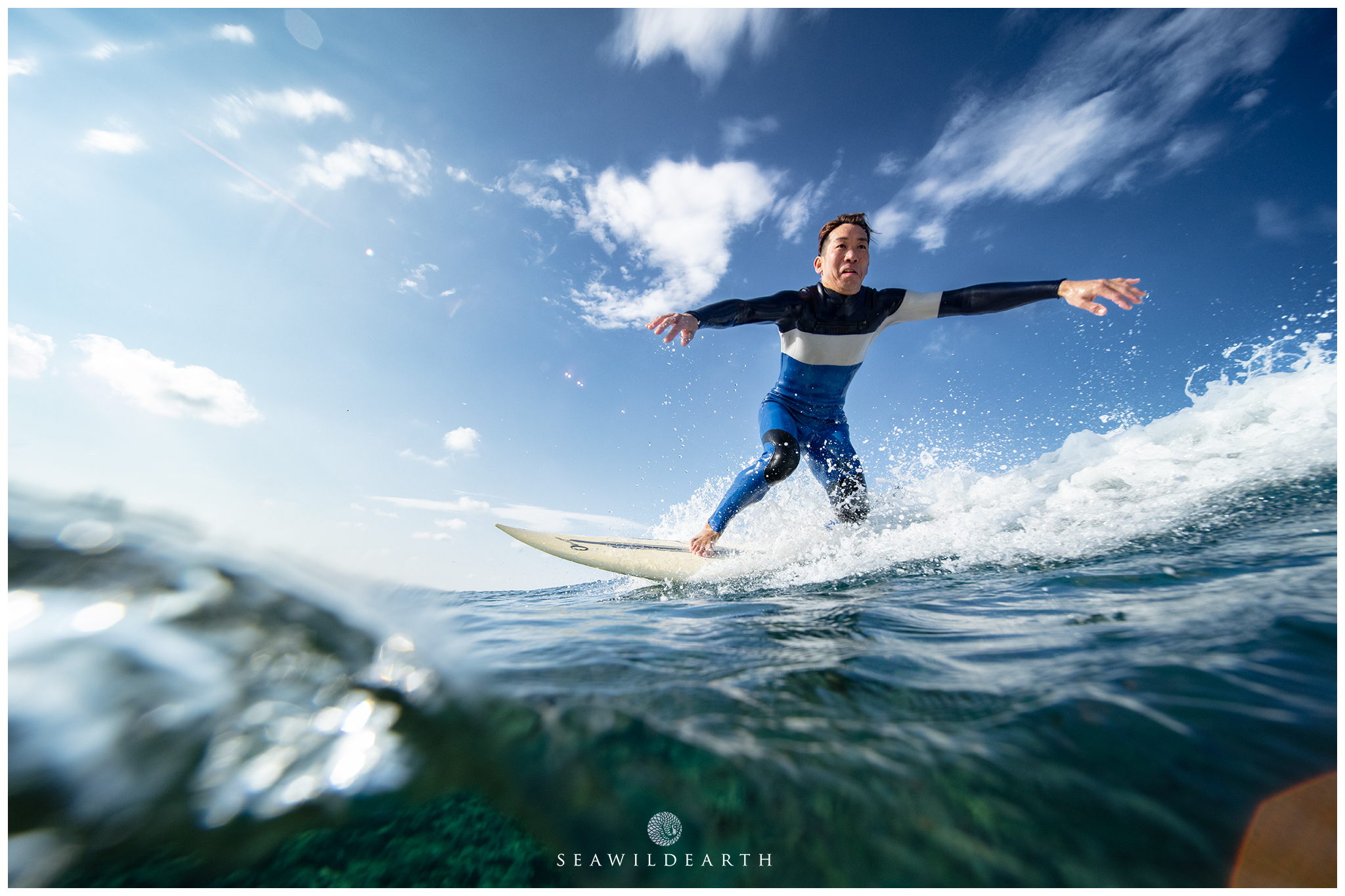
Heading out for your first lesson or celebrating your 1000th? In water surf photography is based on numerous factors. Please contact to discuss that.
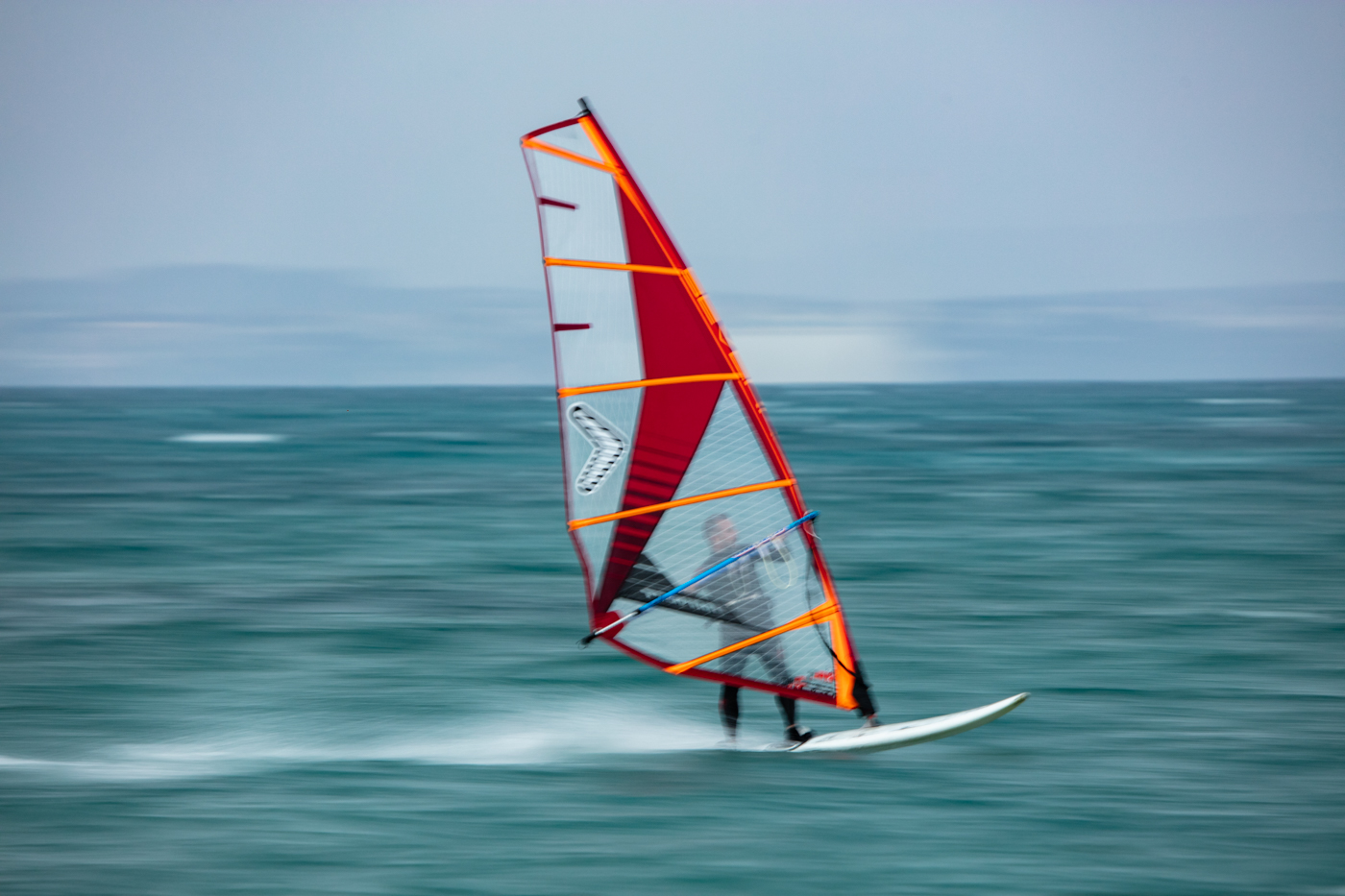
There's nothing like harnessing the power of the wind to skim across the surface of the Ocean. Relive the adventure with an excellent photographic record of your session.
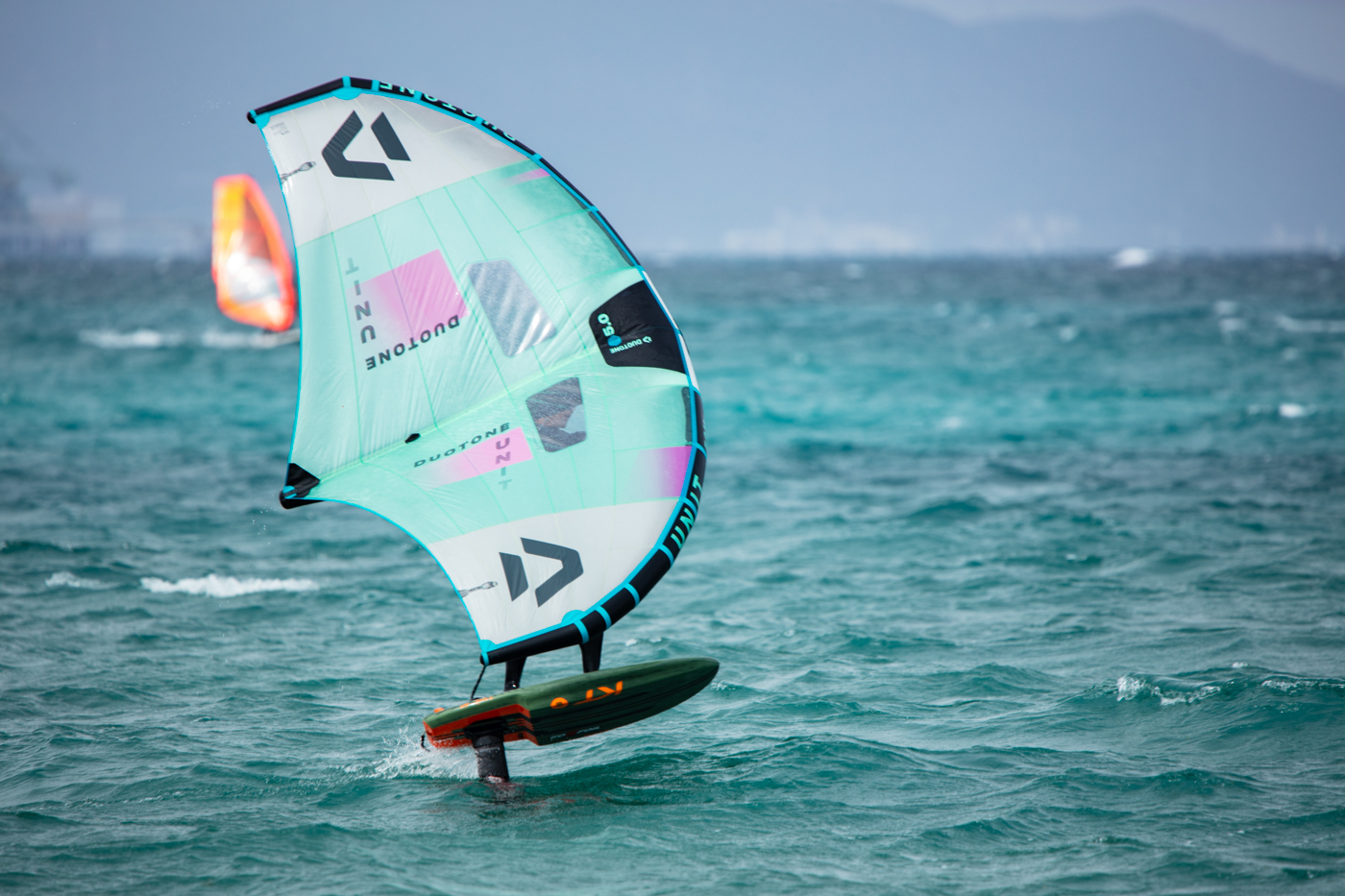
So you've taken to this exciting and relatively new concept in watersports. How about some photographs of you in your finest aquatic moment as you enjoy the thrill of the ride?
Beyond the faster pace of the watersports arena, I'm also offering Ocean themed photoshoots for families and commercial clients. This service revolves predominantly around the use of a dome port. Some of you may have seen bulbous front elements on underwater camera accessories etc, that is a dome port. Depending on the size and profile size of the port will determine how fine of a waterline one can produce in the photographs. A dome port with a large diameter and profile space creates the best imagery. I've just invested in the largest dome port currently available to the serious Ocean photographer.
At this moment in time, I am working on the creation of imagery to showcase this application but rest assured, once I do land some cool images I will be sure to share them. It is, however, the onset of winter here in Okinawa, so the Ocean is cold and to an extent uninviting. Below is a selection of recent water sports imagery.
About the Author
Internationally recognized as a provider of quality mixed media Mark Thorpe is always on the search for captivating content.

Photographer / Cameraman
Mark Thorpe
Emmy Award Winning wildlife cameraman and Internationally published landscape photographer Mark Thorpe has been an adventurer since he could walk! Spending 17yrs as an Underwater Cameraman at the start of his imaging career the highlight of which was being contracted to work with National Geographic. In that role as a field producer and cameraman he's been privy to a mixed bag of hair raising adventures. For some reason he was always selected for projects relating to large toothed marine predators such as Great White and Tiger Sharks, Sperm Whales and Fur Seals. Additionally he has also been active within Southern Africa on terrestrial projects dealing with a wide array of iconic wildlife.
Currently based in Okinawa, Japan he's always on the lookout for his next big adventure. He shares his exploits online with a totally organic social audience. Sponsored by a number of photographic industry manufacturers he is constantly scouring the islands for captivating landscape and 'Oceanscape' compositions. Videography wise he continues to create short photographic tutorial videos as well as content to promote the diversity of wildlife within the Okinawa prefecture as well as a growing lean towards matters of conservation and responsible environmentalism.
Mark has long been an advocate of simplified living. Fortunate enough to have a partner whom shares that vision he is increasingly vocal about what he perceives to be the requirement for man to change his ways. He advocates for people to change and adopt what he calls a true L.I.F.E or Low Impact Focused Existence in order that future generations also have the opportunity to enjoy the natural wonders of this planet to the same extent that his generation has. There is a growing sense of need for such a radical change.
















































